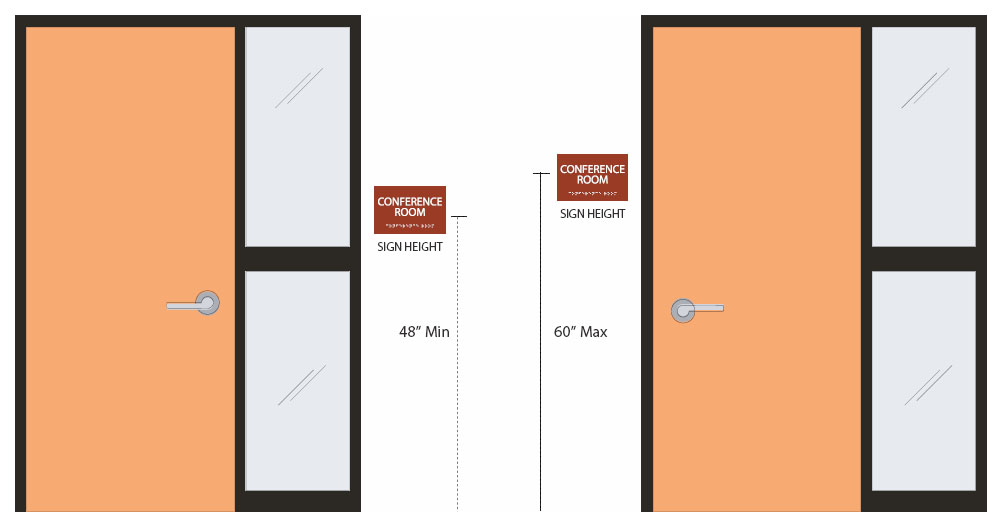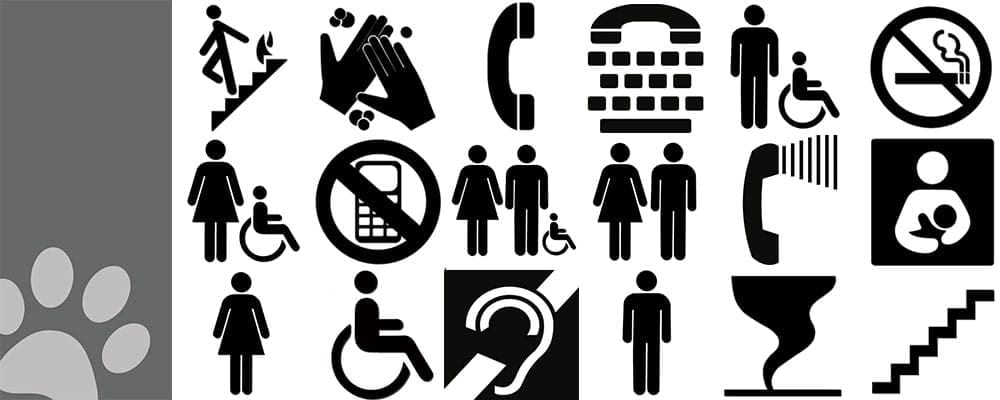Exploring the Secret Attributes of ADA Indicators for Boosted Access
In the world of access, ADA signs work as silent yet effective allies, ensuring that rooms are accessible and comprehensive for people with specials needs. By integrating Braille and tactile elements, these signs break obstacles for the aesthetically impaired, while high-contrast color schemes and clear fonts accommodate varied visual needs. Additionally, their tactical positioning is not arbitrary but instead a computed effort to facilitate smooth navigation. Past these functions exists a much deeper narrative concerning the advancement of inclusivity and the ongoing dedication to producing fair rooms. What much more could these signs represent in our search of global availability?
Importance of ADA Compliance
Making sure conformity with the Americans with Disabilities Act (ADA) is critical for fostering inclusivity and equal accessibility in public rooms and workplaces. The ADA, passed in 1990, mandates that all public centers, companies, and transportation services fit people with impairments, ensuring they take pleasure in the same rights and possibilities as others. Conformity with ADA standards not only satisfies legal responsibilities yet also enhances an organization's track record by showing its dedication to diversity and inclusivity.
One of the essential elements of ADA conformity is the execution of accessible signage. ADA indications are created to make certain that people with disabilities can easily navigate with structures and rooms. These indicators must comply with specific standards regarding dimension, typeface, shade comparison, and placement to ensure exposure and readability for all. Correctly executed ADA signage assists eliminate obstacles that individuals with specials needs commonly come across, consequently promoting their independence and self-confidence (ADA Signs).
Moreover, sticking to ADA laws can alleviate the risk of legal effects and possible fines. Organizations that stop working to follow ADA standards may encounter claims or penalties, which can be both destructive and financially challenging to their public picture. Hence, ADA compliance is indispensable to promoting a fair atmosphere for every person.
Braille and Tactile Elements
The unification of Braille and tactile aspects into ADA signs personifies the principles of accessibility and inclusivity. These functions are essential for people who are blind or aesthetically damaged, allowing them to navigate public areas with better self-reliance and confidence. Braille, a tactile writing system, is essential in giving composed info in a style that can be quickly perceived via touch. It is generally placed below the equivalent text on signage to make sure that people can access the information without visual assistance.
Responsive components expand past Braille and include increased characters and symbols. These parts are created to be discernible by touch, allowing individuals to recognize area numbers, bathrooms, departures, and other crucial areas. The ADA establishes details standards relating to the size, spacing, and placement of these responsive aspects to enhance readability and guarantee consistency throughout different environments.

High-Contrast Color Design
High-contrast color pattern play an essential role in boosting the exposure and readability of ADA signs for people with aesthetic impairments. These systems are necessary as they maximize the difference in light reflectance in between text and history, guaranteeing that indicators are quickly noticeable, also from a distance. The Americans with Disabilities Act (ADA) mandates the usage of specific shade contrasts to accommodate those with minimal vision, making it a vital aspect check this of compliance.
The efficiency of high-contrast colors hinges on their capability to stand apart in numerous lights problems, including poorly lit environments and areas with glow. Generally, dark text on a light history or light text on a dark background is used to achieve optimal comparison. Black message on a white or yellow background supplies a raw visual difference that helps in fast acknowledgment and comprehension.

Legible Fonts and Text Dimension
When taking into consideration the layout of ADA signs, the option of readable font styles and suitable text size can not be overemphasized. The Americans with Disabilities Act (ADA) mandates that typefaces need to be not italic and sans-serif, oblique, script, highly ornamental, or of unusual kind.
The dimension of the text also plays a pivotal duty in access. According to ADA standards, the minimum message elevation ought to be 5/8 inch, and it should raise proportionally with watching distance. This is especially vital in public areas where signage needs to be reviewed rapidly and accurately. Consistency in text size adds to a natural visual experience, aiding individuals in browsing atmospheres efficiently.
Furthermore, spacing in between letters and lines is indispensable to clarity. Adequate spacing stops characters from appearing crowded, improving readability. By sticking to these standards, designers can significantly enhance accessibility, making sure that signs serves its designated objective for all individuals, despite their aesthetic capabilities.
Reliable Positioning Techniques
Strategic positioning of ADA signs is necessary for maximizing accessibility and ensuring conformity with lawful requirements. ADA standards state that indications ought to be mounted at a height between 48 to 60 inches from the ground to ensure they are within the line of view for both standing and seated people.
In addition, indications should be placed beside the latch side of doors to enable simple identification prior to entry. This positioning assists individuals locate areas and areas without obstruction. In instances where there is no door, indications should be positioned on the nearby adjacent wall surface. Uniformity in sign positioning throughout a facility boosts predictability, lowering confusion and improving general user experience.

Final Thought
ADA indicators play an important duty in advertising availability by incorporating features that attend to the demands of individuals with impairments. Including Braille and tactile aspects makes sure crucial details is accessible to the visually damaged, while high-contrast color design and readable sans-serif typefaces enhance visibility across different illumination problems. Reliable why not look here positioning strategies, such as suitable installing elevations and critical areas, further facilitate navigation. These aspects collectively promote a comprehensive setting, underscoring the significance of ADA compliance in making sure equivalent accessibility for all.
In the realm of ease of access, ADA signs visit their website serve as quiet yet effective allies, making sure that areas are navigable and inclusive for people with specials needs. The ADA, passed in 1990, mandates that all public facilities, companies, and transport services accommodate people with specials needs, ensuring they delight in the same civil liberties and chances as others. ADA Signs. ADA signs are designed to make certain that individuals with disabilities can conveniently browse with spaces and structures. ADA standards stipulate that indicators must be mounted at a height in between 48 to 60 inches from the ground to ensure they are within the line of view for both standing and seated individuals.ADA signs play an essential function in promoting accessibility by incorporating features that resolve the needs of people with impairments
Comments on “Exploring Imaginative Designs for Reliable ADA Signs”